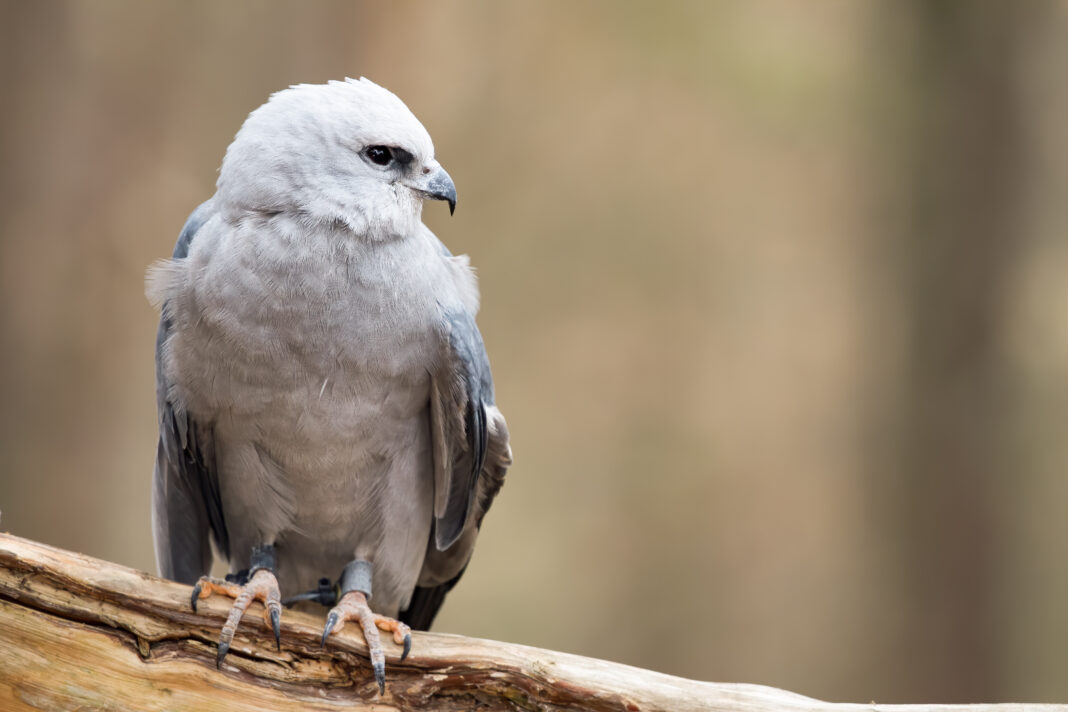Fishin’ Hole Nature: The Mississippi Kite
Sometimes known as a Southern Hawk, the Mississippi Kite is a small beautiful raptor that comes to our area each summer. A bit larger than a pigeon, the adults have very light pearl gray heads and bodies, dark gray wings, hooked beaks, fierce red-brown eyes, and black eye patches…like bandits! They are distinguishable from our Swallow-tail Kites by the lack of a split tail.
Kites are social birds that live in colonies, jointly protecting all their nests and chicks. You will see them in the wooded wetlands and forests around local lakes – soaring, zipping, swooping, or sitting high on the bare branches of tall trees. If you spot one, keep looking around and you might see another three or four more. They come to our area in early summer to build their nests, lay their eggs and raise their young. The chicks fledge July to August, one month after hatching, and they are well camouflaged with brown stripes and mottled feathers. After the summer begins to fade and the young have learned to hunt, colonies pick up and migrate to South America for the winter.
While the kites are here, smaller forest birds become more prudent, staying ‘down-low and ‘going dark’. They know that it’s a bird-eat-bird world out there. On the fly a kite can dive down and catch frogs, lizards, snakes, insects, bats and small birds. They also grab their meals right off tree branches and tall shrubs. Staying quiet and out of sight is a smart, protective instinct many smaller birds have around any predatory raptor.
Just as kites can be a danger to smaller birds, bigger raptors are a danger to kites. Kites are very protective of their chicks, and are highly aggressive toward intruders, including eagles, owls, raccoons, and even humans. Adult sentinels will sit on favorite high perches, on alert, watching for anything they perceive to be a menace. These aerial artists will also soar through the skies patrolling for danger. When one sees a predator that could threaten the colony, it screeches out warnings and streaks after it like a bullet! The Mississippi Kite makes up for its small size with its incredible speed and enormous courage. It will repeatedly dive-bomb an eagle in flight, successfully forcing it to leave the kites’ nesting area!
Kites have also been known to dive-bomb people when we get too close to their nesting sites! If you spot kites on a golf course or in a park, keep your hats on. You might be the enemy.
Learn more about the incredible nature in our area by joining a chapter of the Texas Master Naturalist organization. To find a chapter close to you, or to read about the state program, go online to https://txmn.tamu.edu. Volunteer and get involved!















